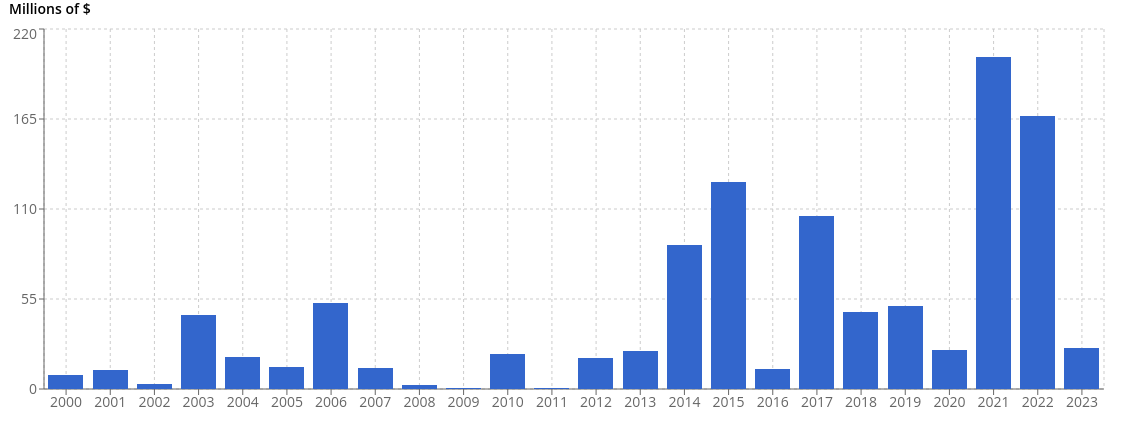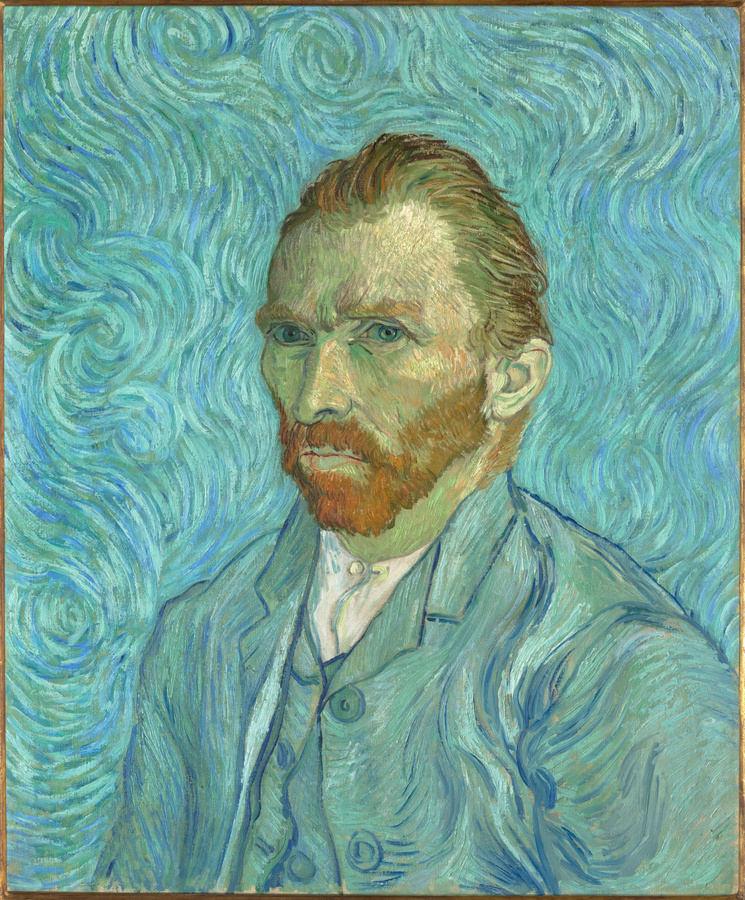Van Gogh: market success in recent years
[07 Jul 2023]Vincent VAN GOGH (1853-1890)’s work has been in the news in recent years on a number of fronts including auction sales with ultra-high estimates, museum exhibitions and even newspapers headlines (in October 2022 two young climate activists threw the contents of two cans of tinned food at his Sunflowers (1888) at London’s National Gallery). In 2023 there are opportunities on both sides of the Atlantic to see several masterpieces by the Dutch artist who found inspiration for some of his most striking paintings in the South of France. We take a look at the undeniable vitality of his market.

Vincent Van Gogh, Verger avec cyprès (1888)
The record we no longer expected…
After the dispersion of the American Macklowe collection, which totaled $922 million at Sotheby’s between autumn 2021 and spring 2022, the sale of the collection put together by Paul G. Allen – co-founder of Microsoft along with Bill Gates in 1975 – was eagerly awaited… and it was an unprecedented success: in two sessions, an impressive number of ‘masterpieces of art history’ were offered at Christie’s in November 2022 and it became the first-ever private collection to fetch over a billion US dollars at auction (in a white glove sale, with the majority of the artworks selling above their high estimates). Indeed, auction history terms, we could say there is a ‘before and after’ the Paul G. Allen sale. As Max Carter, Vice President for 20th and 21st Century Art at Christie’s recalled after the sale, “never before have more than two paintings exceeded $100 million in a single sale, but (on November 9) we had five. Four of the works were masterpieces by the ‘fathers of Modern Art’ – Cézanne, Seurat, Van Gogh and Gauguin.”
On the evening of the first session, Van Gogh’s Verger avec cyprès《有柏树的果园》 changed hands for $116.8 million, a record that largely exceeded the artist’s previous auction record hammered in 1990 for his famous Portrait du Docteur Gachet (嘉舍医师的画像) ($82.5 million). A fairly large format painting (65.2 x 80.2 cm) Orchard with Cypresses is from a series of 14 canvases presenting different views of a blossoming orchard. Paul Allen had a pronounced taste for landscapes and he particularly liked works that reflected the artist’s imagination. “When you look at a painting, you are looking into a different country, into someone else’s imagination – how they saw it.” In February 1888, Vincent van Gogh arrived in Arles and against all odds, the town was covered in snow as if sleeping. Soon after, spring broke and it was that moment that was captured by Orchard with Cypresses. During the 15 months he lived in the South of France, his work evolved, producing intensely colored paintings that were often impasto and increasingly expressive. Working at an intensive pace, he painted the works that are today recognized as the most representative of his style.
Since the Paul G. Allen sale in November 2022, the market has not shown any signs of wishing to repeat that flurry of 9-digit results. Last May, Sotheby’s New York presented a painting of prime importance in Van Gogh’s career, Jardin devant le Mas Debray, a work painted in the summer of 1887 at the beginning of the three and last most productive years of his life just before he discovered the South of France, and, just before he painted Orchard with Cypresses. Surrounded by artists, dancers and musicians in Montmartre, Van Gogh abandoned the dark palette that dominated many of his early paintings in Holland and replaced it with a swirl of color and a formal pursuit of Impressionist inspiration. It’s a very beautiful landscape with an excellent although eventful provenance. Spoliated by the Nazi’s from Baroness Goldschmidt-Rothschild then appropriated by Goering himself, the painting fetched over $23.3 million, at the low end of its estimated price range.

Van Gogh Turnover evolution ©Artprice
Nevertheless, Van Gogh’s auction turnover has experienced a significant expansion since 2021, a year in which no less than 24 of his works changed hands for a total of over $203 million and the following year saw his new auction record for Orchard with cypresses. In 2023 two superb exhibitions shed light on the end of the artist’s short but extraordinary career.
Two Van Gogh exhibitions… one period
“To find the real character of things here you have to look at them and paint them for a very long time.” Letter to Theo Van Gogh, Arles, 26 September 1888
Orchard with cypresses can still be viewed because it is the centerpiece of the “Van Gogh Cypresses” exhibition currently being hosted by the Metropolitan Museum of Art New York (May-August 2023). In an April 1888 letter from the South of France, the Dutch artist already mentions the pictorial potential of these distinctive conifers of the region under starry night skies or above golden wheat fields. But, it was not until over a year later, after leaving Arles to find refuge in the Saint-Rémy asylum, that this spark of inspiration gave birth to emblematic images in a short but momentous period of his life in June 1889, the year that is generally credited with his ‘discovery’ of cypresses. It’s the first time this theme has been the subject of an exhibition.
Tracing the painter’s gradual exploration of conifers, which became ubiquitous in his artistic vocabulary during those two years in Provence, the MET’s thematic focus traces his obsession with a subject he found both exciting and difficult. Astonished “that no one has yet made them as I see them”, he almost made them a signature theme in the works of this period, from the single drawing dated September 1888 (in Arles), to the studio composition painted just before his release from the asylum in May 1890.

Vincent Van Gogh, Portrait de l’artiste (détail), 1889, Musée d’Orsay
The exhibitions at the Van Gogh museum in Amsterdam (May – September 2023 for its 50th anniversary) and at the Musée d’Orsay in Paris (October 2023 – February 2024) pick up – so to speak – the chronological thread of the MET show by highlighting the last two months of the artist’s life in Auvers-sur-Oise. No exhibition has yet been devoted exclusively to this final and yet crucial stage: in two months, the painter produced 74 paintings and 33 drawings, including iconic works such as Le Docteur Gachet, L’église d’Auvers-sur-Oise, or Champ de blé aux corbeaux. Severely stressed by his mental crises in Arles and his stay in the Saint-Rémy asylum, VAN GOGH moved closer to Paris, to his brother Theo and to Dr Gachet, then a renowned specialist in the treatment of melancholy, a patron of artists and an art collector. Vincent van Gogh arrived in Auvers on 20 May 1890 and committed suicide there two months later on 29 July. They were two short but extremely fruitful months full of experimentation with new themes and formats, a touch more expressive than before and using new color combinations. In effect, Van Gogh left this world in style having given everything, without holding anything back. On 3 May 1889, he had written to Theo Van Gogh from Arles: “Madness does at least have one advantage; that perhaps one becomes less exclusive”.




 0
0
